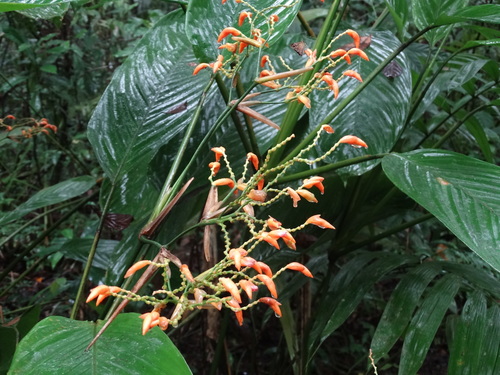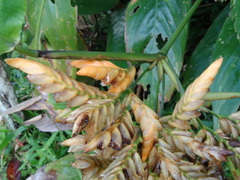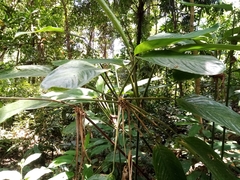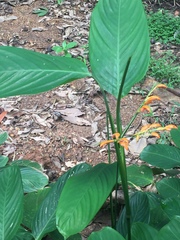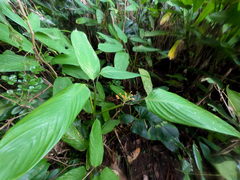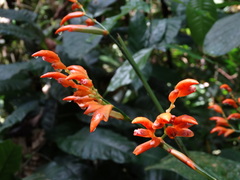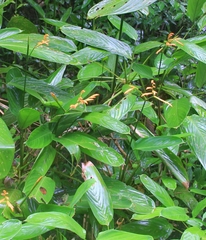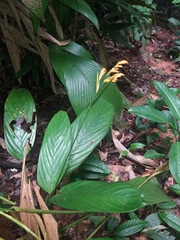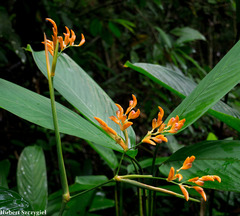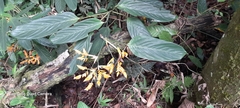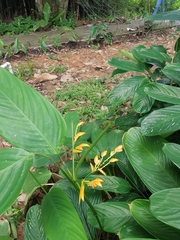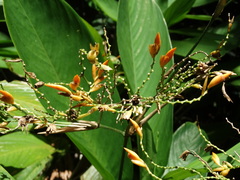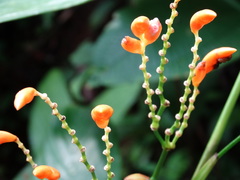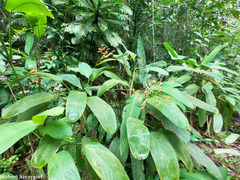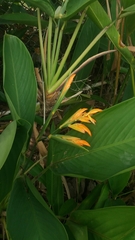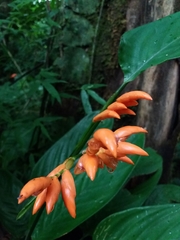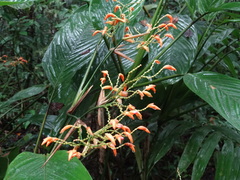

|
|
|
|
Family: Marantaceae
|
Caulescent rhizomatous herb, 1-2 m tall. Leaves 2-ranked, atop a leafless stem 30-185 cm tall; petioles mostly 19-37 cm long, the sheath narrow, extending more than halfway to blade, often to base of pulvinus, the pulvinus 15-25 mm long; blades oblong-elliptic, abruptly short-acuminate, broadly obtuse to rounded at base, mostly 26-46 cm long, 9-18 cm wide (smaller on juveniles), faintly pleated, all veins +/- equal. Inflorescence usually solitary, arising from a leaf sheath, held above the leaves; peduncle 50-75 cm long; spikes diffusely and paniculately compound, the rachis closely flexuous; bracts orange, mostly broadly ovate, 1-2.5 cm long, soon deciduous; flowers ca 1 cm long, pedicellate, in pairs on a common stalk, subtended by a bracteole; sepals 3, free, ca 7 mm long, slightly shorter than petals; petals united at base, white with red markings; staminodia petaloid, slightly shorter than petals. Fruits ca 1 cm long; seed 1, black, on a short white aril. Croat 11815. Uncommon in the forest and at the edge of the forest along the lake. Flowers mostly throughout the rainy season (June to December), principally in September; rarely flowering earlier (in the dry season) elsewhere in Panama at higher elevations. The fruits develop rapidly and are present on the same inflorescence with the flowers, soon shedding to expose the rachis. |

